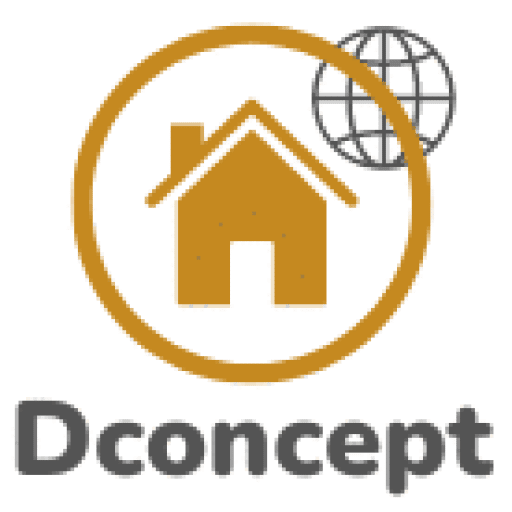Smart home technology promises to revolutionize the way we live by automating everyday tasks and optimizing energy efficiency. One area where this technology has significant potential is in the management of pool systems. With the right devices and applications, you can monitor the condition of your pool, control its functions and even predict maintenance needs – all from your smartphone. But how do you go about integrating this smart technology with your existing pool systems?
Real-time data processing: The heart of smart pool systems
The core of any smart system, including your pool, is real-time data processing. This involves the collection of data from various sensors located around your pool – such as those measuring temperature, pH levels, or chlorine concentration – and then processing this data in real-time. This allows you to gain instant and accurate insights into the state of your pool, which can inform timely and effective decisions.
A lire également : The best baby pool floats for safe summer splashing
When integrating smart technology into your pool system, an essential step is to choose and install the appropriate sensors. These devices are the eyes and ears of your smart system, providing the raw data that will be processed and analyzed. It’s important to select sensors that are durable, precise, and compatible with your chosen IoT platform.
Once you have your sensors in place, they will need to be connected to a data processing system. This could be a physical piece of hardware, like a smart hub, or a cloud-based platform. This system will gather the data from the sensors, process it, and then present it to you in a user-friendly format, such as a mobile app or web dashboard.
A voir aussi : How do you manage and maintain pH levels in a heavily shaded UK home swimming pool?
Ensuring security in your smart pool system
As with any IoT device, security should be a top concern when integrating smart technology with your pool systems. The very nature of these devices – constantly connected to the internet and collecting large amounts of data – makes them a potential target for cyber-attacks.
One of the best practices for securing your smart pool system is to use a private network. This could be a dedicated network exclusively for your IoT devices, separate from your home’s main network. This will make it harder for potential attackers to gain access to your devices, and even if they do, they won’t be able to access any other devices or information on your home network.
Another important step is to ensure that all of your devices and applications are always up to date. Manufacturers regularly release software updates that fix known security vulnerabilities, and by keeping your devices updated, you can benefit from these improvements.
Powering your smart pool system: Energy-efficient solutions
The energy consumption of smart devices is another key consideration. Fortunately, many of the latest smart devices are designed with energy efficiency in mind, using low-power sensors and processors, and applying power-saving modes when not in use.
When choosing devices for your smart pool system, look for those that are Energy Star certified. This certification assures that the device meets strict energy efficiency guidelines set by the U.S. Environmental Protection Agency and the Department of Energy.
Also, consider integrating your pool system with a smart grid. A smart grid is an electricity network that uses digital technology to monitor and manage electricity use more efficiently. By connecting your pool system to a smart grid, you can take advantage of times when electricity demand – and therefore prices – are lower.
Making the most of your smart pool system: Advanced applications
Once you have your smart pool system up and running, you can start to explore more advanced applications. For example, you can use the data from your sensors to predict when maintenance is likely to be needed, helping to avoid costly breakdowns and ensure your pool is always in top condition.
You can also use smart technology to automate many aspects of pool maintenance. For example, you could program your system to automatically adjust the temperature or chemical levels based on the data from your sensors, or to turn on the filtration system during off-peak energy hours.
In summary, integrating smart home technology with your pool system can bring many benefits, from increased convenience and efficiency to improved maintenance and lower energy costs. However, it’s essential to plan carefully, choose the right devices, prioritize security, and explore the advanced features that this technology can offer. Through these best practices, you’re sure to create a smart pool system that meets your needs and enhances your enjoyment of your pool.
Implementing Deep Learning for Predictive Maintenance and Decision Making
Deep learning, a subset of artificial intelligence, has emerged as a powerful tool in extracting valuable information from sensor data collected by smart home devices. When applied to your smart pool system, it can help predict maintenance needs and make data-driven decisions automatically.
Just like a Google Scholar diligently researching a topic, deep learning algorithms examine the data gathered by your pool sensors. This includes information on temperature, chemical balance, and device performance. Utilizing activity recognition, these algorithms learn the patterns and norms of your pool system. Then, recognizing any deviation from these patterns, the system can anticipate problems before they occur, alerting you to potential maintenance needs.
Beyond predictive maintenance, deep learning can also drive automated decision making. For instance, if the system recognises a consistent rise in pool temperature beyond the set limit, it can trigger the cooling system or shade mechanism automatically. This not only saves time but also ensures optimal pool conditions at all times.
Thus, integrating deep learning into your smart pool system can transform it into a self-monitoring, self-regulating system, significantly reducing the need for manual intervention. It’s like having a personal pool assistant that never sleeps.
The Role of Smart Grids and Low Power Area Networks in an Efficient IoT System
In the universe of smart cities, smart homes play a critical role, and a smart pool system is an integral part of a smart home. But how do these smart devices communicate with each other and the larger internet things? The answer lies in low power area networks and smart grids.
Low power area networks (LPWAN) are specifically designed for IoT systems operating on low energy. They allow the various devices in your pool system to communicate with each other and the cloud platform, all while consuming minimal power. This makes them an ideal choice for resource-constrained smart devices, ensuring efficient data transmission without draining the device battery.
Next comes the smart grid. A smart grid is more than just an electricity network – it’s a platform that uses digital technology to optimize electricity use. If you connect your smart pool system to a smart grid, it can automatically adjust its energy usage to non-peak hours, reducing the energy cost. Moreover, with smart energy management, the system can use power when it’s cheaper and more abundant, contributing to a more sustainable environment.
In a nutshell, by leveraging LPWAN and smart grids, your smart pool system can become a part of the smart city ecosystem, contributing to overall energy efficiency and sustainability.
Conclusion: Embarking on the Smart Pool Journey
Integrating smart home technology into your pool system is like taking a leap into the future. It offers real-time data processing, predictive maintenance, automated decision making, and energy efficiency, all on your fingertips. As a result, you get to enjoy more time in your pool, and less time worrying about its upkeep.
However, this journey requires careful planning and execution. From selecting the right devices and securing your network to optimizing energy consumption and exploring advanced applications like deep learning, every step matters. In the end, you are not just creating a smart pool system, but contributing to the larger vision of smart homes and smart cities.
Remember, this integration is not about replacing human involvement but enhancing it. Smart technology is here to assist us, making our lives easier and more enjoyable. So, let’s embrace this technology, and dive into the future of smart pools.










